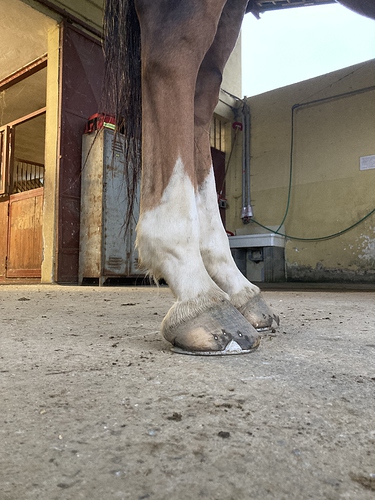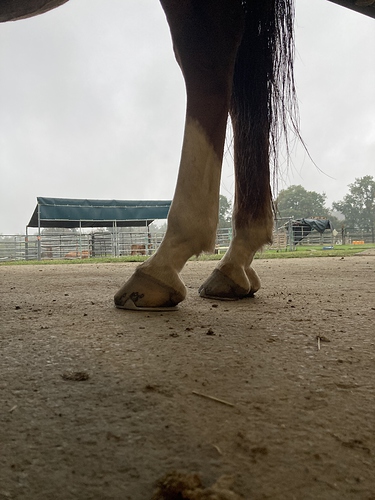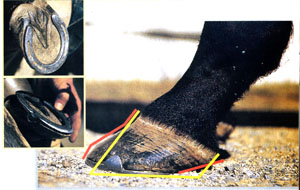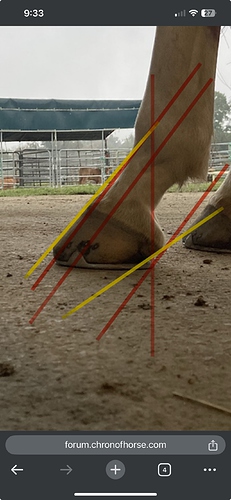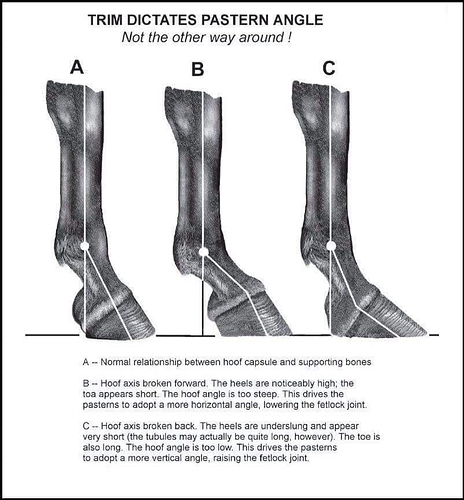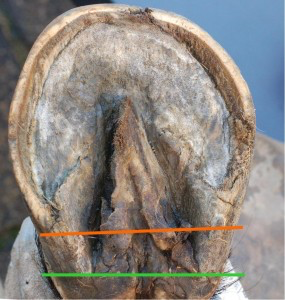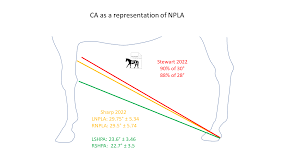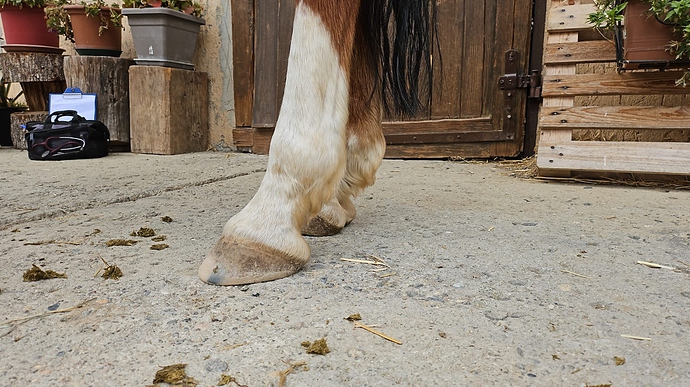Reviving this thread (and posting this in other threads too for visibility) because I just had hind rads taken of my older gelding. He’s always had back soreness issues (we won’t get into all of that now, but he does not have any kissing spine), and recently he started standing a bit camped under and resting his right hind foot, which is coincidentally the leg he kicks out with when he’s stiff. He also has wind puffs - he has always had these, they don’t seem to bother him, but I have always wondered what could be causing them. His SI palpates sore always, regardless of SI injections/mesotherapy,etc. Rads were taken at the very end of his cycle - he has an appointment on Monday with the farrier.
His left hind is 1 degree positive, right hind is neutral. Right hind has some med-lat imbalance, not crazy but I can see it with my untrained eye. Sole depth about 1.6cm on both feet.
To me, this doesn’t sound that bad. No negative angles, but the lateral imbalance and neutral angle on the right hind does seem to add up with his soreness presenting moreso on the right side. Honestly, I’m a wee bit bummed his hinds weren’t negative since that would help explain some of these constant issues he has.
My question is, (and I can post the rads as well if I need to), could just being neutral cause that much of an issue vs actually being negative? Could the imbalance on his right hind make a big difference in his movement and strain on his hind end? Would everyone recommend pads to fix, pulling the shoes to fix, or just trimming differently?
(I’ll be discussing with vet and farrier too of course, but want personal experiences please!!)

